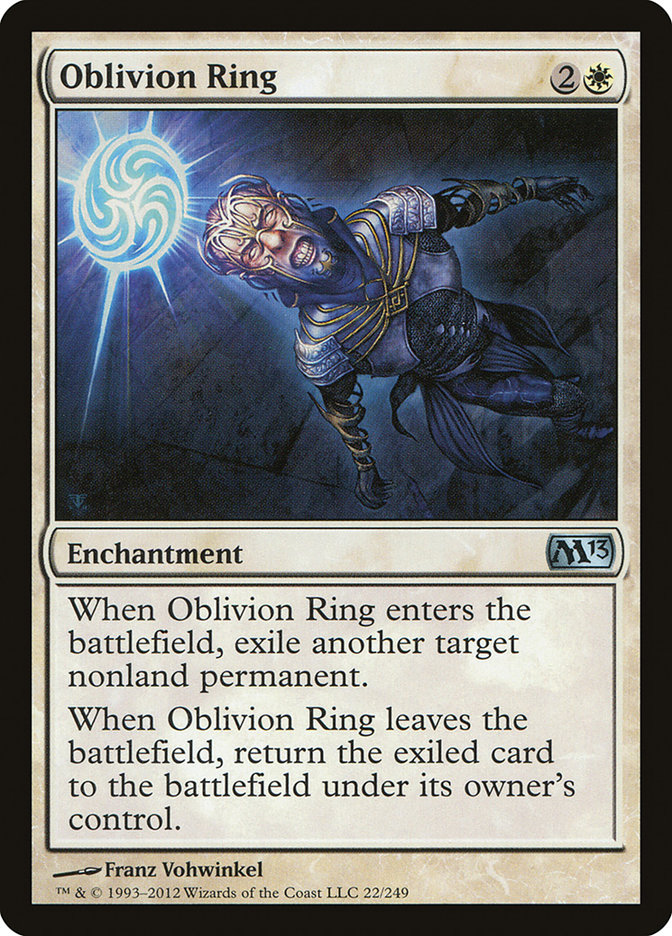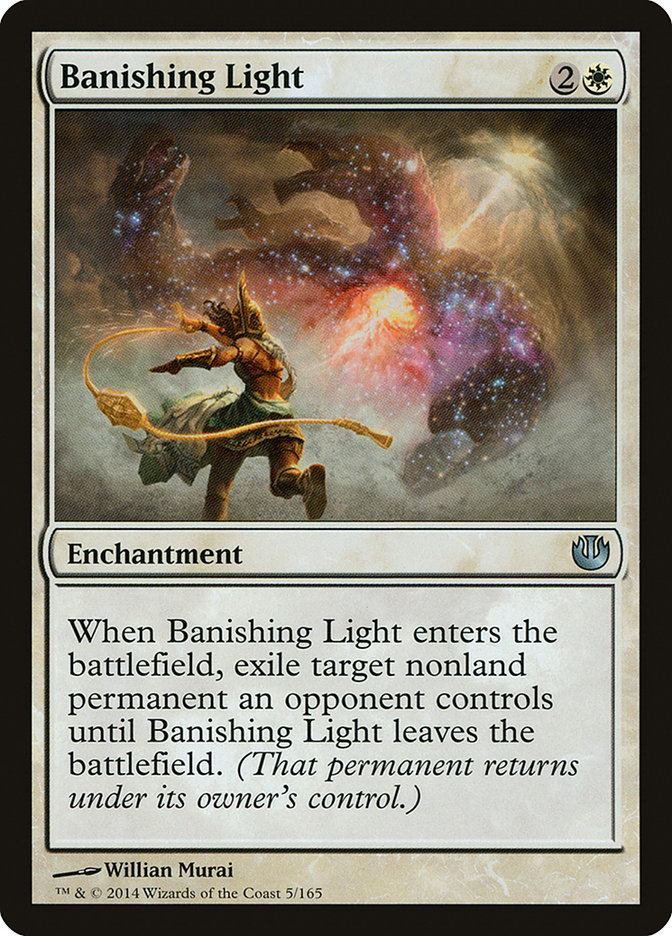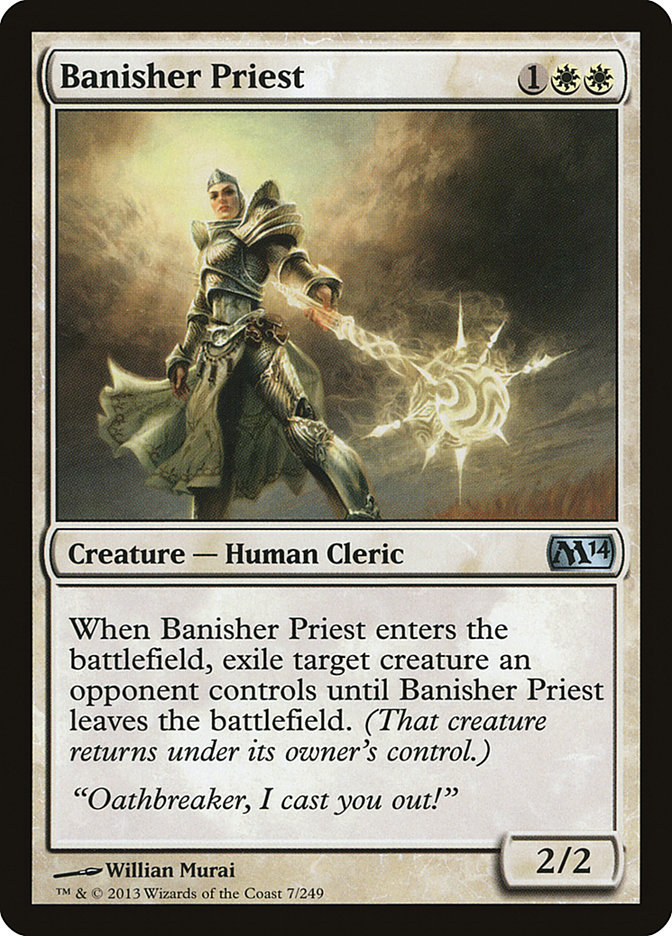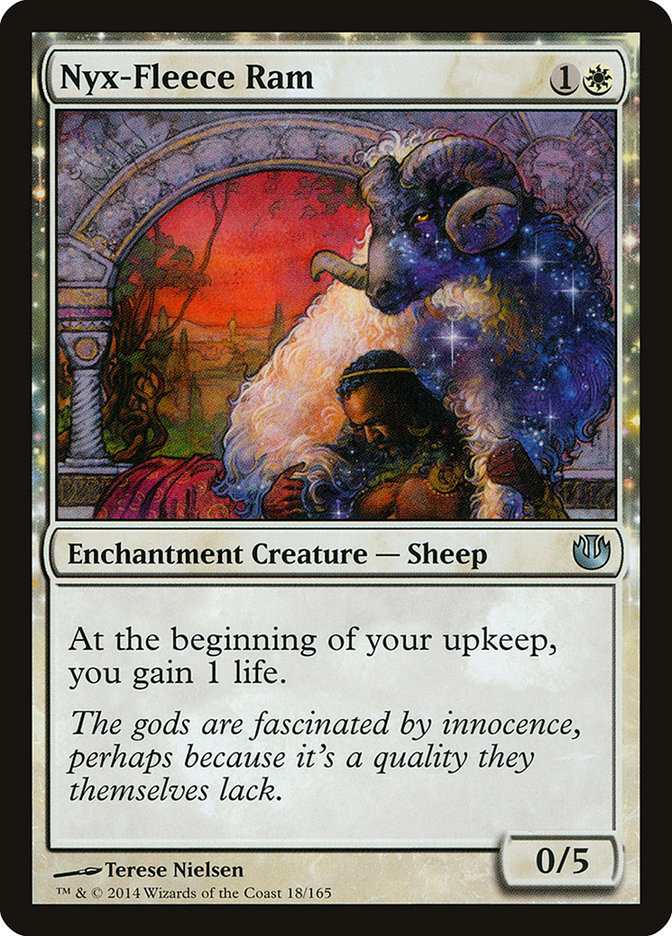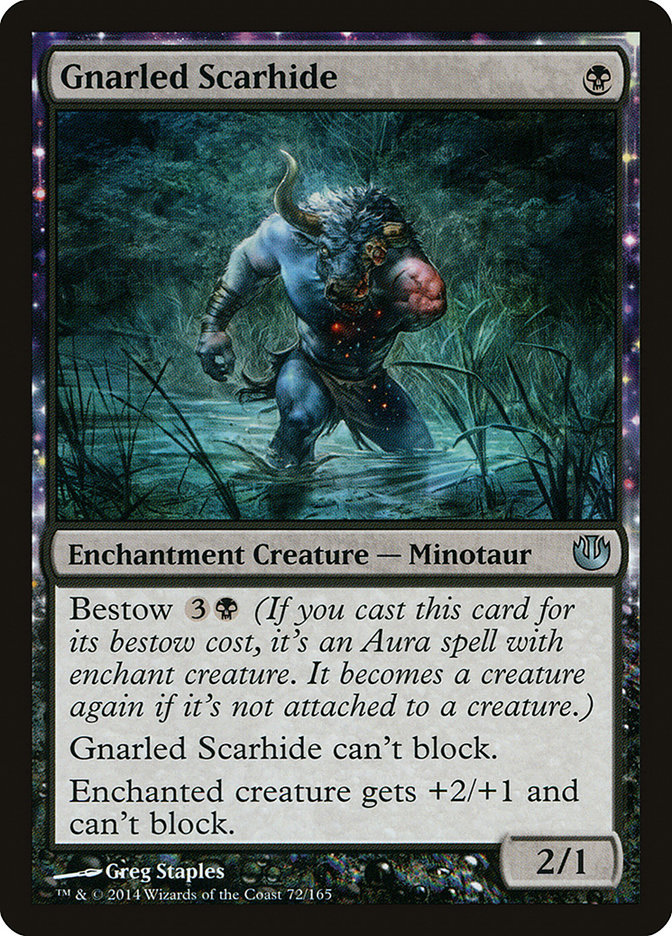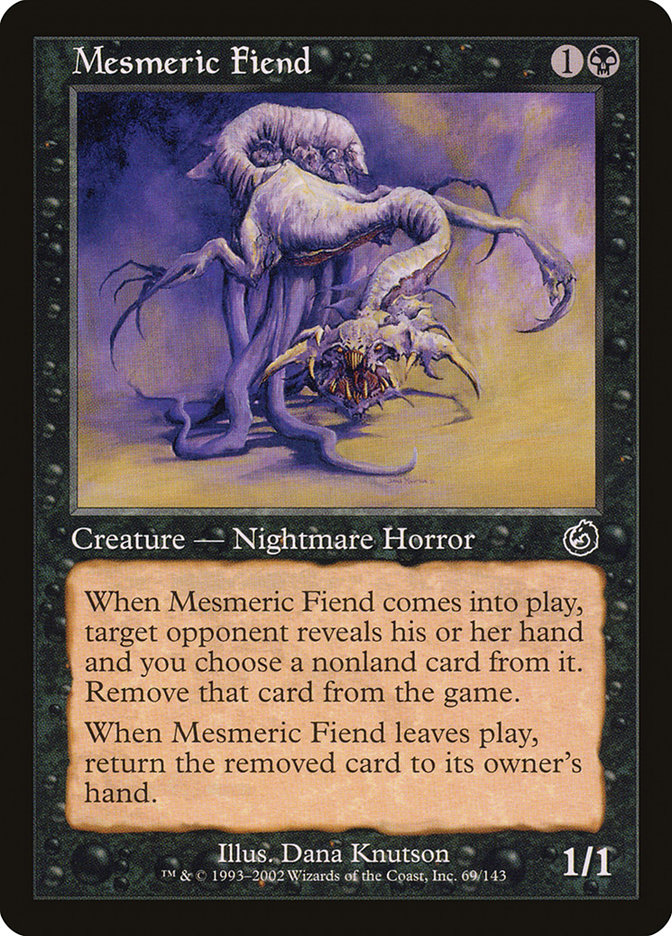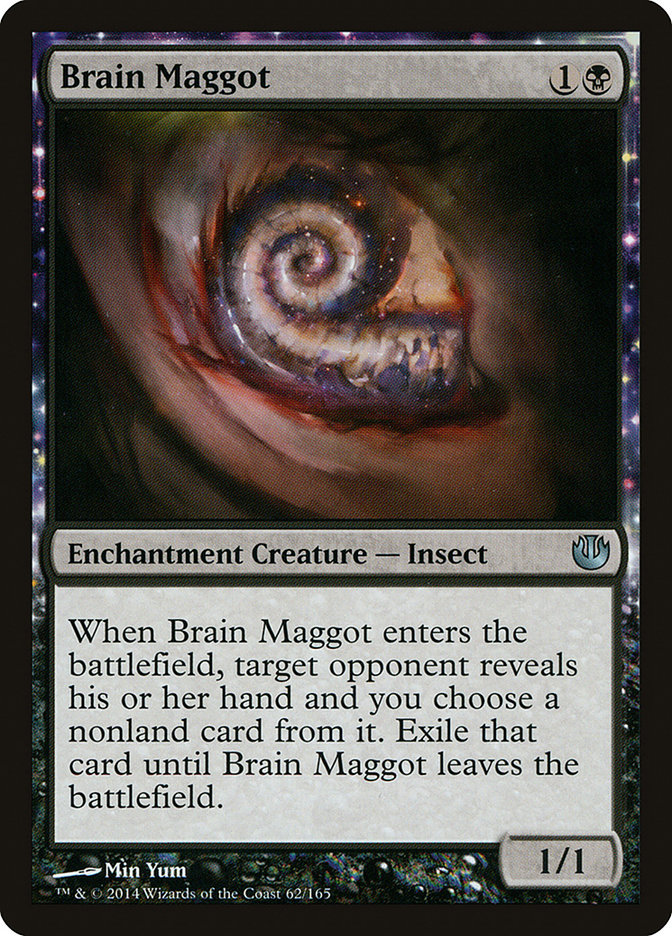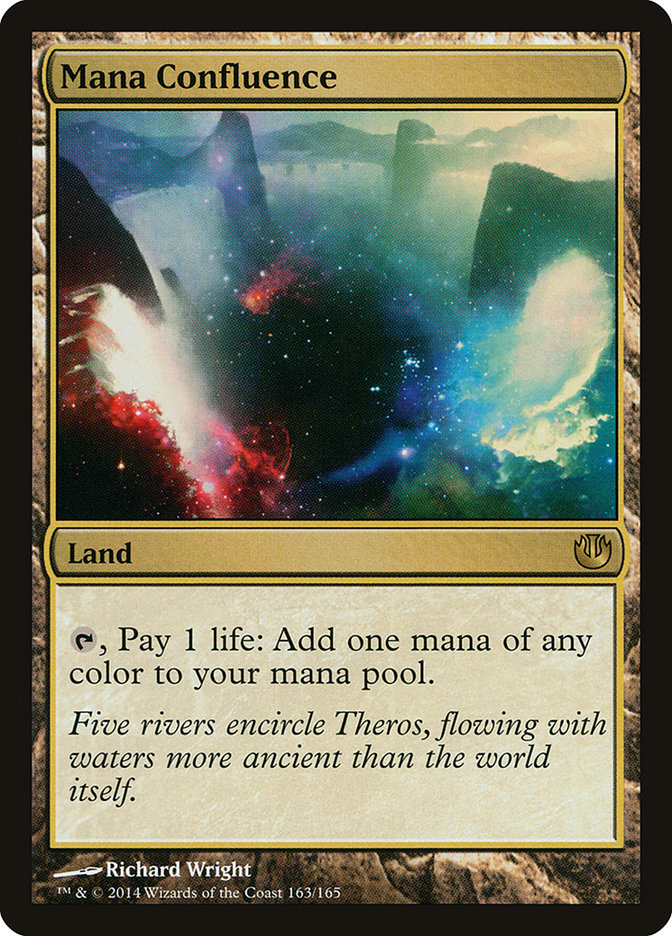This Friday when the clock strikes twelve, Journey into Nyx midnight Prereleases will begin, and with it will come the opportunity to play with a whole host of new cards. The following Friday when the cards are released, they will immediately become available for consumption and use, and as such the Standard format as we know it will be forever changed. The format will be almost fully powered, which is to say that the most powerful Standard formats possible have two full blocks and the overlap of two core sets. This happens for a brief moment between July and October of each year. We are almost there—but not yet.
This article is going up a bit late in Journey into Nyx spoiler season, so you’re undoubtedly tired of hearing about how cool the new three-mana Gods (such as Pharika, God of Affliction) are. And while your eyes probably widened at the prospect of Eidolon of Blossoms, you might be looking forward to simply competing in the new Standard format rather than brewing with the new cards. With that in mind, I want to focus on the cards you’re going to see in the first SCG Standard Open of the season in Cincinnati, Ohio. These cards will be on the front lines doing the heavy lifting, and since I don’t know anything about sports, we will simply call these cards workhorses.
The first one I’d like to talk about is Banishing Light.
This is not a flashy card, but that’s exactly the point. Essentially a fixed Oblivion Ring, Banishing Light has a few implications. What do I mean by fixed? Take a look at Fiend Hunter and Banisher Priest:
Other than the stat lines, these cards operate similarly. With Fiend Hunter, you can stack the triggers and remove Fiend Hunter from play to forever exile a creature, but with Banisher Priest, you cannot. The difference between Banishing Light (clever name!) and Oblivion Ring is the same.
This card being in the Standard format has a few implications. First of all, if people are playing this card, Pack Rat is a bit better and a bit safer. Instead of people only having Detention Sphere, there’s a chance they draw this instead. Why then would anyone play this instead of Detention Sphere?
Well, for one, to deal with opposing Detention Sphere of course! The control decks people favor now often include no non Elspeth, Sun’s Champion win conditions, and sometimes they’re so reliant on a singleton Elixir of Immortality you could Fact or Fiction it against four copies of Mana Drain and they’d still have to take it. If you actually Detention Sphered that Elixir of Immortality in game 1 or their Elspeth or their Aetherling (somehow!), it would be lights out. Now we can play our normal game and rest easy knowing that we can answer an opposing Detention Sphere.
The presence of Banishing Light in the format also gives nonblue decks answers to things, be they Gods, Equipment, or whatever. In addition to all of that, Banishing Light now gives decks that might not have otherwise had answers to Mistcutter Hydra (and Skylasher) answers. This means Mono-Blue Devotion (or U/W Devotion, if you’d like) can splash this instead of Detention Sphere to have answers to the premier sideboard cards people use against them. This comes at the low, low price of not having another blue devotion mana symbol in play.
Of course you have to be white to play Banishing Light, but you don’t have to be blue. This is a fantastic card that you will absolutely see on the first day the format. I’d also like to go on the record before the "textbox police" arrive saying that I think this card is perfectly acceptable and not offensive (unlike Thoughtseize and Hero’s Downfall, which could be painted as offensive with regard to how their textboxes interact with the opponent’s cards.) This card can be removed quite easily, and while it will be played as a four-of in a lot of decks (especially come October post-rotation), I think it is acceptable and welcome Banishing Light to the format.
The next card is a somewhat innocuous-looking sheep. Cool picture? You bet! Great card? I think so.
This isn’t Wall of Reverence but it is only half the mana. As many have said on Twitter "I’ve played a lot of Yoked Oxen in my day," and well, you get the idea. This is the most yoked of all oxen. Instead of simply playing a great blocker, you will be playing a card the red decks must deal with. This card can’t block Chandra’s Phoenix, but it can mitigate the effect of the Bird (gaining one each turn effectively cuts the damage from an undisturbed Bird in half,) and it really can block just about anything else at least once. At five toughness, the Ram can block an average two-drop and survive Shock and Searing Blood, although I readily admit that it can’t survive Rubblebelt Maaka or Lightning Strike.
I can easily imagine playing this card prior to casting Supreme Verdict in order to force your opponent to overextend or to use their resources on the Ram and then casting the Verdict, but what’s more interesting is that post-Verdict I can see not blocking with this if they’re sending in their 2/2—at least not all the time. I can also see this card’s existence complicating sideboarding for red decks for exactly that reason. Can they really afford to board out their somewhat ineffective Lightning Strike and Rubblebelt Maaka against your control strategy when they need them to bust through the Ram? I’m excited to have two or three of these in play against a red deck full of Foundry Street Denizen, particularly in a game where "no conceding" has been called.
The next two cards are exciting to me for different reasons but could ultimately end up in the same place.
The first, Gnarled Scarhide, is not exactly what we needed, but it is something we wanted, even if we didn’t know it.
Of course, this comparison requires a little suspension of disbelief or at least some willingness to think outside the box. For those of you who don’t know, Jackal Pup was one of the premier one-drops of its day (despite how it may look now), and Gnarled Scarhide has the same stats with slightly different downsides (which can also be used as an upside in some cases.) Gnarled Scarhide cannot block, but we’re used to that. That also means that if you bestow it onto your opponent’s creature, that creature also cannot block. I’m ashamed to admit it, but I didn’t even recognize that you could bestow onto their creature until a few days ago. That makes this a great aggressive one-drop in a color that already has a great aggressive creature deck.
I think Gnarled Scarhide is a great fit for the aggro black deck I wrote about a little while back, although that deck may need to take a different shape to remain competitive in the upcoming environment. If R/W Burn is very popular, it may not be a good choice or may need a completely different build, but if R/W Burn gets subdued by the aforementioned Ram, then I’m willing to bet black-based aggro will be a deck to be reckoned with.
In addition to Gnarled Scarhide, we can also play Spiteful Returned if we want, and in combination with Herald of Torment, Agent of the Fates is now looking pretty good to me with twelve bestows that are essentially free. I felt Agent of the Fates was already a borderline-playable to borderline-good card, and while I never played with or against it in Constructed I can imagine the tempo swings it can create being unbeatable.
I also like the fact that even if they just sacrifice their Elvish Mystic, that Elvish Mystic can’t block your next guy, which is probably going to end up being good for at least five damage (or the life of another guy). Finally, while Agent of the Fates is not very good against R/W Burn necessarily, it is very strong against Blood Baron of Vizkopa, which the deck otherwise has no answer to beyond Thoughtseize and Lifebane Zombie. I like having a real answer so I think this is the approach I would take to the deck going forward, but that’s not all.
Brain Maggot is a fixed Mesmeric Fiend. What’s a Mesmeric Fiend, you ask?
Mesmeric Fiend got played in Block Constructed and Standard and maybe even Extended way back when there was an Extended format. This is interesting to me because the set Torment came out around eleven years ago, and I fully expect this to be a highly played card that fits into multiple strategies quite well. While creatures on the whole have gotten a lot bigger and stronger and spells have obviously declined (not to mention the advent of planeswalkers!), this card has aged remarkably well.
I’ve already heard (without trying) people lamenting the fact that they’ve printed this card. In conjunction with Thoughtseize and even Duress, you’re looking at up to twelve ways to disrupt your opponent’s hand, and not a lot of decks can really keep up with that. Of course the decks you’d most like to disrupt now have Sphinx’s Revelation to draw into (it used to be Deep Analysis, which is also quite backbreaking), but they still need to draw it!
Brain Maggot can seamlessly be added to not only the Mono-Black Aggro deck we just spoke about but also as an excellent sideboard card in Mono-Black Devotion, a deck that has brought nightmares to so many in the past few seasons. In addition, I could see this card playing a similar role to Nightveil Specter out of the board in control mirrors, although in this case you won’t expose yourself to tapping out for the Specter on the draw and letting them resolve a Jace, Architect of Thought! Of course, it doesn’t do double duty against Mono-Blue Devotion, so it might not be that great of a fit there.
Overall, I’m excited to play with these two cards at least once, and if I’m way off base, well, at least I got to Fiend someone.
Quick and dirty Mono-Black Aggro with Brain Maggot:
Creatures (28)
- 4 Rakdos Cackler
- 4 Tormented Hero
- 4 Agent of the Fates
- 4 Herald of Torment
- 4 Spiteful Returned
- 4 Gnarled Scarhide
- 4 Brain Maggot
Lands (24)
Spells (8)

The Temples won’t matter unless you’re sideboarding Nightveil Specter (might be good!), so I highly recommend diversifying to keep your opponent on their toes.
This deck is missing the aggressive Thrill-Kill Assassin that is so good against the green decks, but in exchange for this we get to try out the new cards and also shore up our deck against control strategies for game 1. In addition, we’ve given up on the maindeck Lifebane Zombie (this idea doesn’t really sit well with me, but we’ll go with it.) Lifebane Zombie isn’t exactly the best against R/W Burn, so at least we have that going for us. I definitely want to sideboard four of them though. Without testing to see exactly how bad the R/W Burn matchup is, I can’t say how viable this list is, but I want to try it!
Even if Agent of the Fates is no good, we can switch out cards for Desecration Demon and Thrill-Kill Assassin while maintaining Brian Maggot and Gnarled Scarhide. We can also relegate Brain Maggot to the sideboard in favor of Lifebane Zombie (probably the most "well rounded" approach to the list.) With that in mind, I’d still like to try this out to see how Agent of the Fates fares and how much help it might need from the missing Lifebane Zombie.
The last card I want to talk about is perhaps the best of the bunch: Mana Confluence.
Sticking with our theme, Mana Confluence is a lot like City of Brass.
The cards are almost identical, but as numerous people have already pointed out, if your opponent manages to tap your Mana Confluence with an Icy Manipulator or a Rishadan Port, you won’t take a damage.
This is probably the most important Eternal card in the set (edging out perhaps Aegis of the Gods, the Ivory Mask with legs.) There are a myriad of decks that would love to play eight copies of City of Brass (I know this is crazy!), and now they can. The decks that happily play "so many" City of Brass don’t really care about their life total because they plan on winning quickly and playing only the best possible cards to do so. In Legacy a deck like Dredge would run probably as many City of Brass as possible after their Cephalid Coliseum quota has been filled because the game simply won’t last long enough for it to matter. They might tap their City of Brass two or three times and then essentially win or lose. Decks like this do exist in Standard, though in a slightly different guise.
The first deck that comes to mind for me is the W/B Humans deck that crops up from time to time as an answer to some strategies. I think Brain Maggot fits here nicely, if perhaps only in the sideboard. This is a deck with heavy mana requirements, and especially when Godless Shrine leaves the format, the strategy will likely desire the ability to continue casting its spells.
Hexproof decks, with seemingly limitless aggression and seemingly limitless colored mana requirements, would also benefit from the card, and I think it would be a welcome addition especially because they simply can’t play a long game. Trading a few life each game to ensure you aren’t losing five percent of your games from not drawing a color seems like a very worthwhile tradeoff to me. In addition to this, if you actually cast Unflinching Courage, you can easily mitigate the damage taken. Burn is something people always tend toward in a new format, and since it did well at the Season One Invitational in Charlotte, I expect it to be popular again going forward. In a world where burn is something to worry about and the black decks are skimping on Devour Flesh, I do like the idea of a hexproof deck that can cast its spells.
A different variety of Naya Aggro cropped up a few months back, and I actually played against it at an Open in Seattle right after Pro Tour Theros. The deck centered on Boros Charm and Ghor-Clan Rampager and could make for a scary opponent. The simple fact is that decks right now are not really prepared to outright lose on turn 4.
Granted, the combo costs RRGW to pull off, but that’s at least eight damage without accounting for their self-inflicted damage (shock lands) and whatever else you’ve been throwing at them (Experiment One, Soldier of the Pantheon, normal G/W and Naya Aggro cards.) I don’t want to attempt to create a list because there’s a real chance the deck should be more than just three colors once you’re willing to commit to playing four copies of Mana Confluence, and I simply haven’t done the legwork on what a four-color aggro deck might look like in this format.
Obviously we have yet to see the full power of the three-mana Gods, and I’m sure a whole host of new Standard decks will crop up powered by said Gods. But the next Pro Tour Qualifier season is Modern, and I haven’t even begun to think about the possibilities. I’m guessing the format will be pretty much unchanged by the next banned list announcement, and with that in mind we can begin to look at how the new cards from Journey into Nyx might interact with that format as well.

